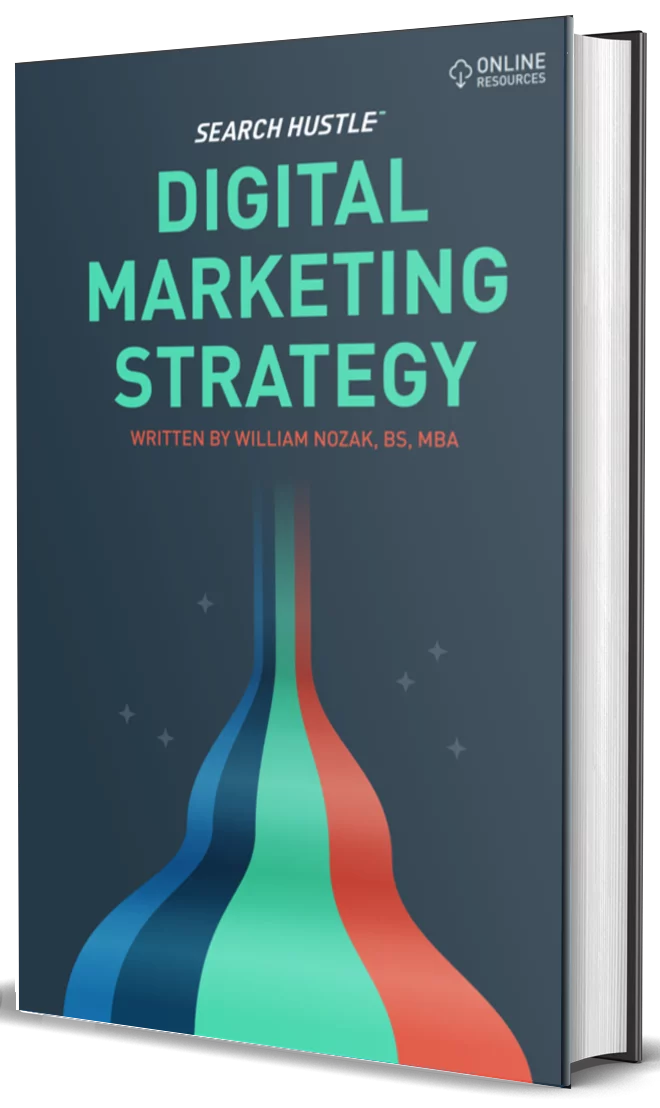Intro to Content Marketing
Discover how a content marketing strategy can help you reach a target audience and convert leads into sales
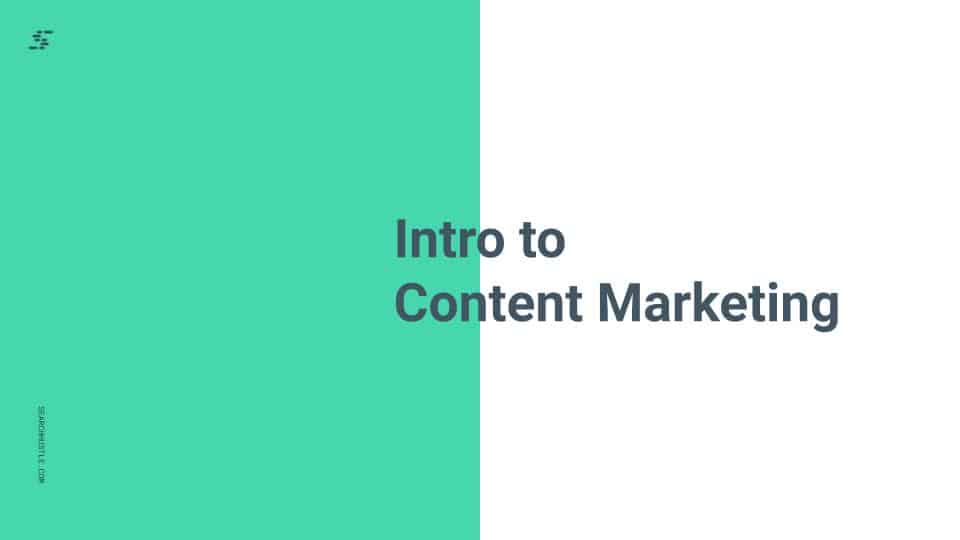
According to Google, content is one of the top three ranking factors it evaluates to decide a site’s position in the SERPs. That shouldn’t come as a surprise to anyone, either. After all, content and SEO complement each other like salt and pepper. People use search engines to look for answers to their questions (informational queries); search engines then show the most relevant content for that query.
High-quality content is the foundation for SEO success. In the world of digital marketing and SEO, content is king. That’s an expression everyone hears repeatedly, but how do you write SEO-friendly content? Beyond simply writing a basic, intelligible article, here are some things to remember when writing optimized SEO content.
Effective content marketing isn’t just churning out blog posts with a splash of SEO. The modern web is crowded with clickbait, promotions, and enough content to immerse a person for a lifetime. Good content marketing is about offering valuable and helpful content that reaches the intended audience at the right time.
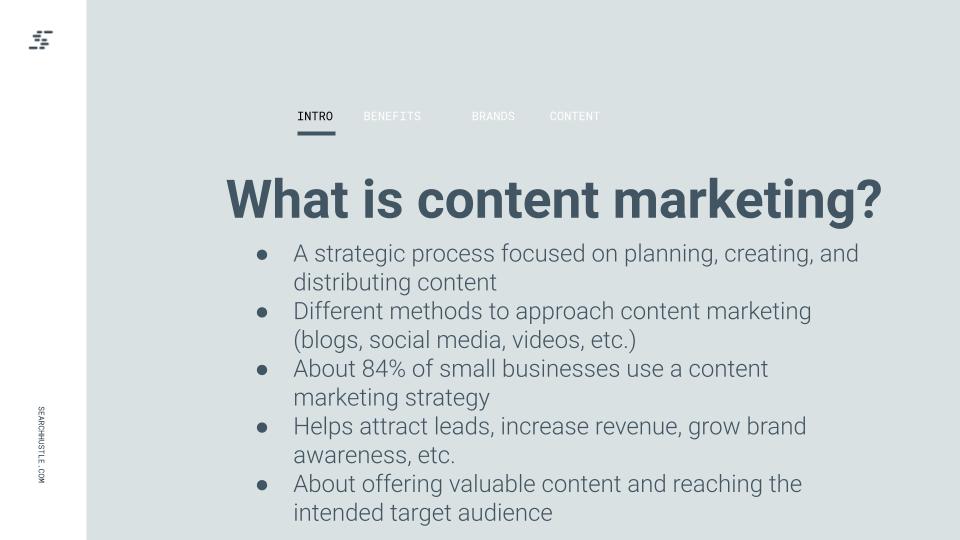
What Is Content Marketing?
Content marketing is a strategic process focused on planning, creating, and distributing useful content to a target audience.
A business might have a variety of objectives tied to its content marketing, such as:
- Creating awareness
- Boosting conversions
- Announcing the release of new products or services
- Humanizing the brand
- Building brand loyalty
When it comes to content marketing, there is a myriad of ways to approach it. From social media, to blogs, to videos, it all falls under the umbrella of content marketing.
When it comes to content marketing, there are a myriad of ways to approach it. From social media to blogs to videos, it all falls beneath the umbrella of content marketing.
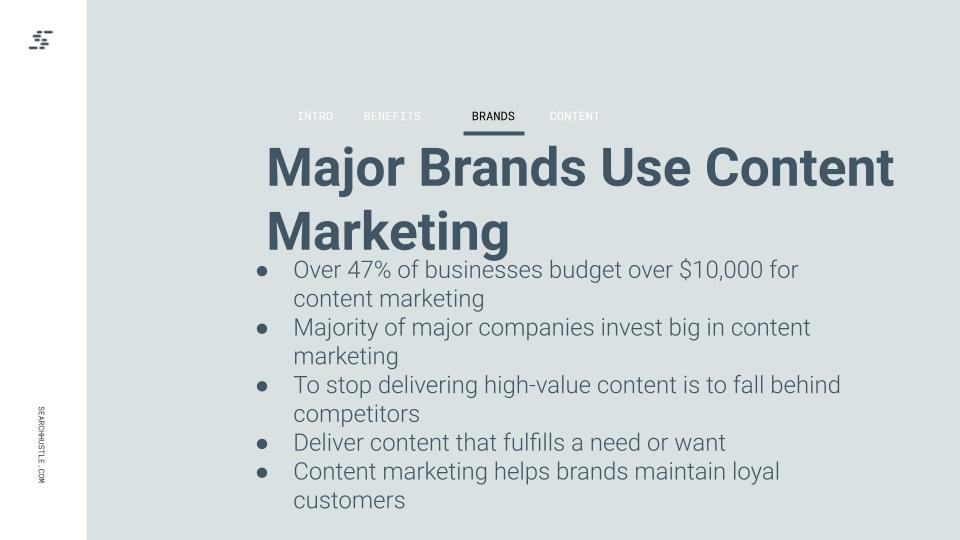
Content Marketing Is Used by Major Brands
In 2020, about 47% of businesses budgeted over $10,000 for their content marketing. Research shows that the majority of companies are investing big in content marketing.
For example, Home Depot utilizes content marketing successfully through its blog. They are providing high-quality content about home improvement projects and including links to products in their stores. Readers learn both how to complete a project and then click on the link to purchase the product that will assist them with their home renovations. This type of content marketing is driving organic traffic to the site, as well as increasing conversions and sales.
Though these brands are well-known, they know that if they stop delivering high-value, entertaining content they’ll fall behind their competitors. The market is ever-shifting and to stay on top of trends and maintain brand loyalty with customers, you have to deliver content that fulfills a need or want.
Content Marketing Is Good for You and Your Customers
An effective content marketing strategy will reap a high return on investment (ROI). It’s key to remember that content marketing is neither a short-term strategy nor a one-and-done deal.
Instead, content marketing can take several months to years of consistent content creation before any results begin to appear. Businesses that utilize content marketing have 6x more conversions than those that don’t.
Content marketing can achieve a variety of benchmarks, but the three primary factors behind using it are:
Increased sales
Advertisements are easier than ever to block or ignore and people aren’t interested in listening to a sales pitch. Prospective buyers want brands they buy from to match their values, address pain points, and provide useful information.
Content marketing can help a business appeal to the right buyers who are ready to make a purchase. Through content marketing, sales can be increased from relevant buyers visiting the site, brand awareness increasing, personalizing the buyer experience, and more.
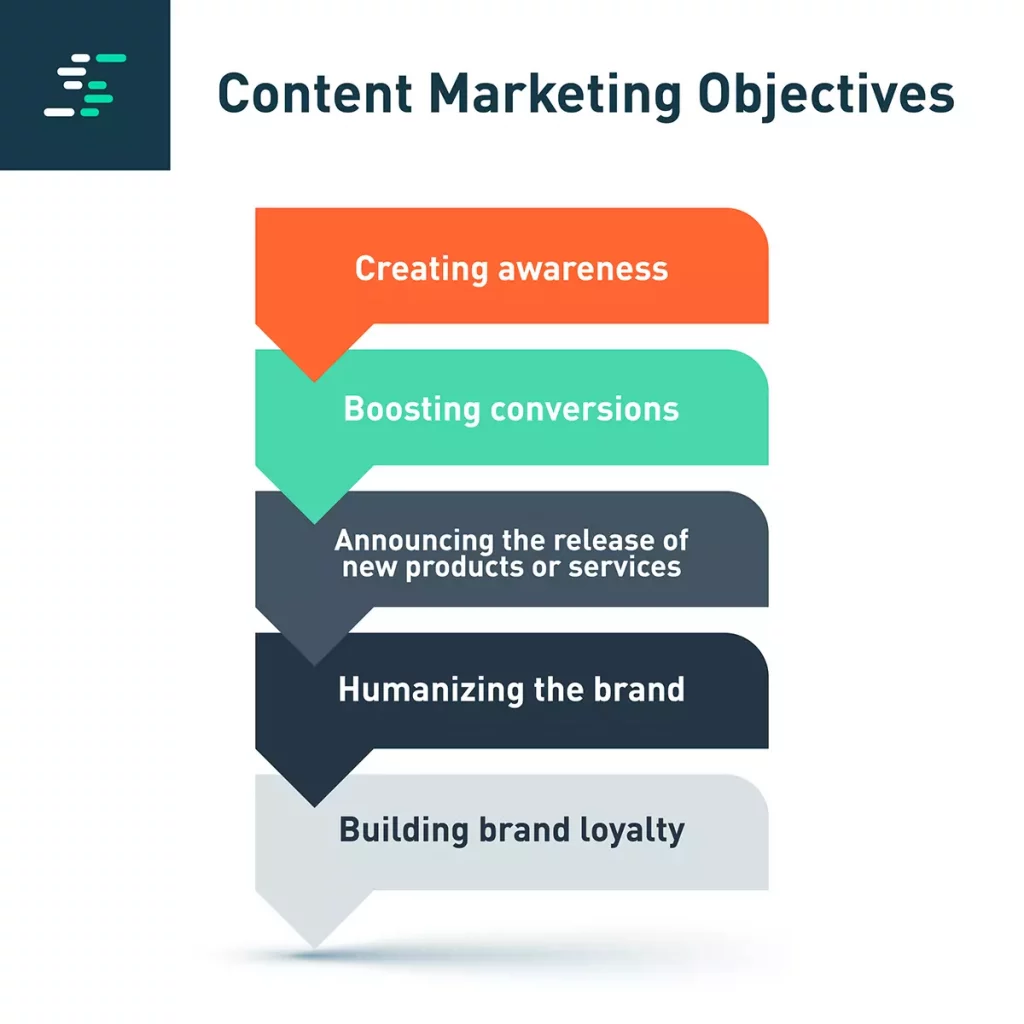
Cost-effective
While the initial investment into content marketing can be a decent chunk, in the long run, it costs about 62% less than traditional outbound marketing.
Content marketing is far more cost-effective than other forms of marketing for several reasons.
Through content marketing, a business is able to take a diverse approach to its strategy. It allows you to develop a buyer persona and target that specific demographic.
Ultimately, content that offers value to the reader builds brand loyalty. When consumers become loyal to a brand, they continue to buy products from that specific business.
Effective content marketing will serve to build a lasting relationship with consumers, which in turn saves the business on future marketing costs.
When done right, content marketing inspires customer loyalty by reaching the target audience with the right content at the right time.
Boosting customer loyalty can be done by ensuring content is helpful and informative and also building an emotional connection with the customer. If customers can expect to read high-quality content, they will return time and time again. In turn, this leads to increased sales and customer retention.
In short, brand loyalty comes from customers feeling rewarded and having a shared community.
Content Types Explained
There are many content types, and a comprehensive SEO strategy requires implementing several of these in tandem.
Home Page
The homepage is the front or main page of a website. It’s intended to be an introduction to the site, as it’s often the first page visitors will see. Sometimes, the homepage also doubles as a type of menu for the site.
Product/Service Pages (Interiors)
Product and service pages are a great way to beef up a website. Nobody knows more about your services and products than you. As both the expert and authority on these topics, it is good practice to write a page for each product or service offered; and make it substantial. These pages are worth investing time in, as this content shouldn’t change often. We frequently call these pillar pages, interiors, or product/service pages, each acting like a homepage or mini-site.
Blog Posts
Blogs are a vital asset with so many benefits. They can build brand awareness, direct traffic toward your most important pages, and compound organic traffic. The frequency is up to you, but the goal should always be to outperform your competitors. Some industries can get by with monthly posting, some post weekly, and others post hourly.
Don’t get burned out, however. It’s important not to lose momentum, so only publish at a rate and a schedule you can keep up with; or hire a third party to help produce additional quality content.
Not every post has to be an authoritative exposé that brings groundbreaking insights into a subject. Blogs can be as simple as “Employee of the Month/Week”, bios, how-tos, guides, product reviews, industry myths, success stories, feature highlights, or giveaways.
Don’t forget to use internal linking to point back at your primary pages.
Evergreen Content
Evergreen content are pages that are always relevant and fresh for readers. Whether annually, quarterly, or even monthly, update this content to ensure they are still on top of the ever-changing industry trends and relevant to the current market and consumer needs.
Evergreen pages are a great way to attract passive web traffic and generate leads that never dry up. In contrast, non-evergreen blogs tend to have a shorter life expectancy which will stop bringing SERP visitors when they stop ranking in the search Engines.
Think evergreen blogs. Because while blog content speaks to additional topics, an evergreen blog can capitalize on trend and informational changes, which helps to keep a page/post relevant and up to date.
Other Content Types
There is a myriad of content formats to choose from. Examples of just a few include:
- Case studies
- ebooks
- Email newsletters
- Infographics
- Webinars
- Interviews
- White papers
- Vlogs
- Videos
- Surveys
- Slides
- Podcasts
- Interactive tools
Instead of randomly choosing a format, a business should take the data gathered from target audience research and content audits to decide what format will work best.
The most popular approach is publishing blog posts on the company website and repurposing and sharing this content on other sites.

Ready to Take Your Search Hustle Further?


